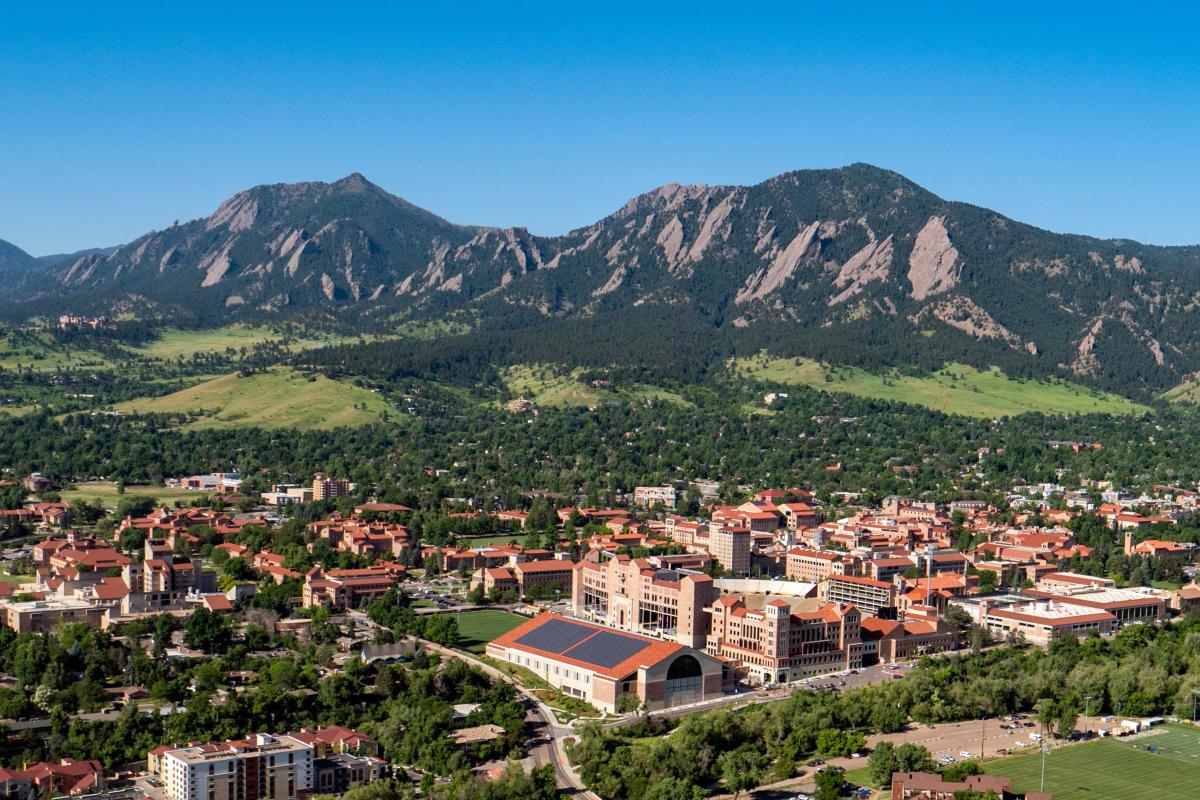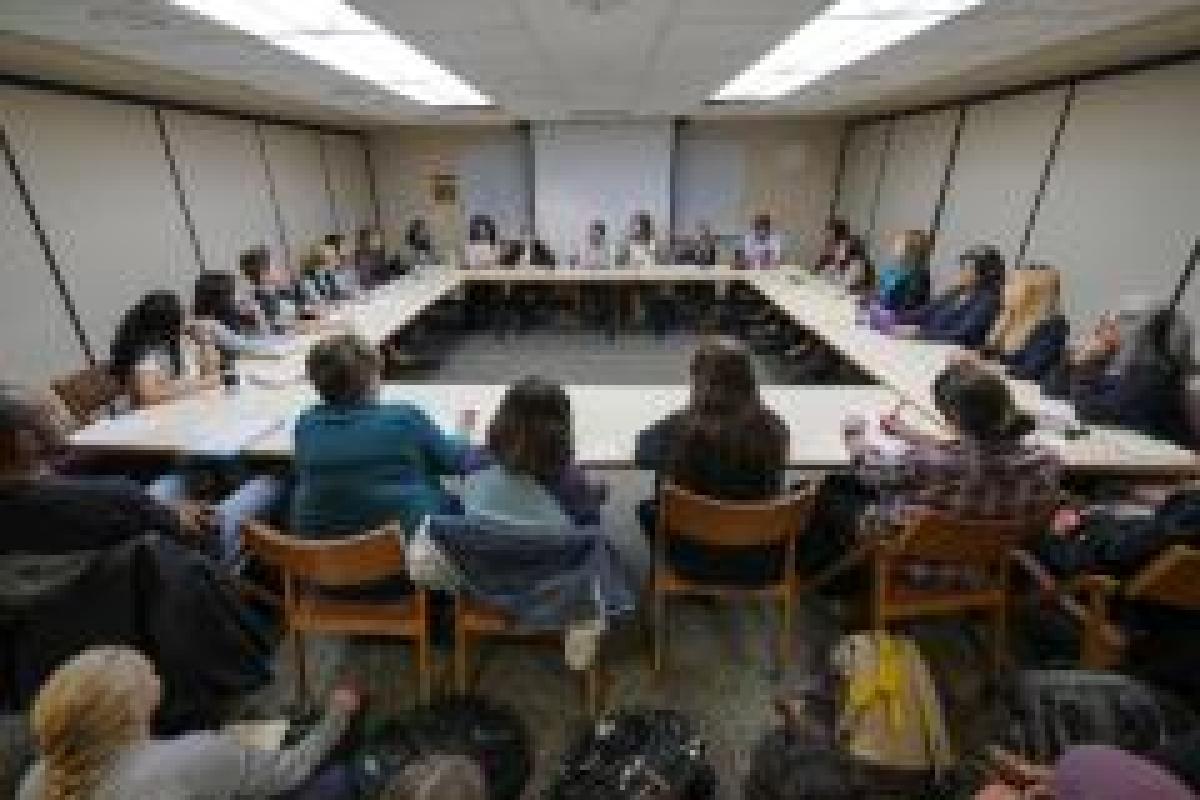Step 6: Conducting Site Visits Inclusively
The purpose of this step is to ensure that site visits are conducted in accordance with the principles of inclusive excellence.
In Step 5 (Conducting Interviews Inclusively), we explained that the interview process gives the hiring committee a valuable opportunity to demonstrate the unit's strengths, thereby ensuring that the candidate to whom it ultimately makes a job offer will choose this position and not another. As stated in Step 5, it is thus essential that the hiring committee uses the interview as an opportunity to show candidates that it is genuinely committed to the work of diversifying faculty representation. Yet to indeed be genuine, this commitment must reflect not only the values of those who serve on the hiring committee but also the unit's broader culture. Faculty diversification requires a paradigm shift. All unit affiliates have roles to play in fostering an inclusive and equitable work environment.
The site visit is thus an opportunity for members of the broader unit—rather than simply the hiring committee—to show candidates that they are genuinely committed to the work of redressing disparities in representation within the academy.
Legal and Illegal Topics of Discussion During Site Visits
All members of the CU Boulder campus community who interact with candidates during site visits must remain legally compliant (see Lawful vs. Unlawful Questions, located in CU Boulder's Faculty Search Process Manual) when asking candidates questions.
Simply adhering to legal requirements will not, however, result in an inclusive and equitable site visit.
Marking Whiteness and Other Forms of Structural Privilege
In the words of Jason Arday, "The challenging of normative Whiteness is paramount in dismantling the cycle of inequality that permeates society" (see Arday's essay "Dismantling Power and Privilege through Reflexivity: Negotiating Normative Whiteness, the Eurocentric Curriculum and Racial Microaggressions Within the Academy" in Must-Read Articles on Faculty Diversification).
Members of privileged groups are often unaware of the ways in which social spaces affirm their identities as normative while simultaneously marking people with less-privileged social identities as "other."
In this way, white people tend to think of themselves and the physical spaces in which they predominate as race-neutral. Although representation of social groups varies within different departments/programs, universities, and academic disciplines/fields, the academy is, on a whole, overwhelmingly white. It is even more overwhelmingly white male. Essential steps in the process of actualizing a paradigm shift include:
- Recognizing that whiteness is not race-neutral
- Recognizing that popular conceptions of "professionalism" are neither race-neutral nor gender-neutral
- Recognizing that the academy sits on a historical bedrock of white supremacy, patriarchy, and colonialism
An essential measure of an inclusive and equitable unit is that it embodies the principles it professes. In other words, the unit has a diverse faculty body with wide representation in leadership positions. According to this measure, most units have a lot of work to do. And this work will only be accomplished if the vast majority of unit affiliates are genuinely invested in the project of marking and dismantling structures of power—whiteness, colonialism, patriarchy, etc.
The hiring committee and anyone else who plans and/or participates in site-visit events and activities must be conscious about the social environments in which these events and activities take place.
- Are these predominantly white and/or male and/or ableist and/or cisgender spaces? If so, how might site-visit planners make these spaces more inclusive?
- If racialization and other forms of social profiling are inherent to social interactions, what do respectful and inclusive intergroup dynamics look like?
The site visit is an opportunity for units that are truly invested in dismantling institutions of inequity to express their commitment to prospective hires who are, themselves, invested in this work. If the unit's commitment is genuine, it will be built into the entire site-visit structure rather than broadcast in superficial expressions and pageantry. In other words, the unit should employ principles of universal design to ensure site-visit activities and events are inclusive to all candidates and attendees at all times.
Unit affiliates who are members of overrepresented groups must understand that hostile social environments are not always overtly vitriolic—certainly not from their perspectives anyway. When whiteness and other forms of structural privilege are unmarked, interactions that may seem benign—even positive—to people in positions of privilege can be deeply harmful. Think about the following example:
A white unit affiliate is engaged in a conversation with a visiting candidate whom the affiliate profiles as non-white. Because the affiliate perceives the candidate to be non-white, the affiliate assumes that the candidate is invested in the project of dismantling institutional inequity. In the conversation, the unit affiliate conveys this assumption while attempting to demonstrate the unit's commitment to the principles of inclusive excellence.
As this example illustrates, expressions of social othering can assume seemingly benevolent guises. Unit affiliates should recognize and resist the impetus to mark members of underrepresented groups as exemplars of inclusive excellence—whose professional value rests on their ability to diversify the unit. To do so perpetuates the pervasive myth that candidates who are members of underrepresented social categories are primarily valuable as denizens of diversity, rather than as accomplished scholars who have attained their candidacy because of their superior merit.
Productive and inclusive ways unit affiliates can articulate their commitment to dismantling systems of structural inequity during the site visit include:
- Acknowledging indigenous ties to the place where the university and its surrounds are located
- Expressing support of DACA recipients and their families
- Implementing principles of universal design (please see the following section on this page)
- Asking interview questions that assess candidates' commitment to the principles of inclusive excellence
- Ensuring that the physical and social spaces where site-visit activities and events occur are inclusive to all attendees
As discussed elsewhere in the Step-by-Step Guide to Inclusive Faculty Hiring, decisionmakers and all unit affiliates must approach the faculty-search process with a commitment to educating themselves about the nuanced dynamics of structural inequity. Ignorance of privilege is key to the reproduction of privileged social identities. So white, patriarchal, and colonized environments need to be acknowledged as such by the very organizations and individuals who embody whiteness, patriarchy, and institutions of settler-colonialism.
Implementing Universal Design During Site Visits
As with the interview phase of the faculty-search process, the site visit should be conducted in such a way that all candidates have a positive and welcoming experience. Strategies for integrating universal design into the site visit include and are not limited to the following:
- Avoid scheduling interviews and/or site visits on religious and other holidays
- Schedule breaks during the day so candidates can rest/decompress
- Ask about dietary restrictions
- Unit affiliates who organize the site visit should ensure that all costs are paid up front and that candidates are not expected to cover, even temporarily, any necessary expenses
- If a hotel stay is involved, the unit should consider providing some sort of welcome package
- Unit affiliates should take care to cultivate conversations that don’t implicitly value structural privileges
- Unit affiliates should take care to understand what microaggressions are and to avoid committing them
- Unit affiliates who organize the site visit should work to ensure that interviews/events/activities occur in physical and social spaces that are congenial and inclusive
For more on the importance of conducting equitable and inclusive site visits, see these external resources.









